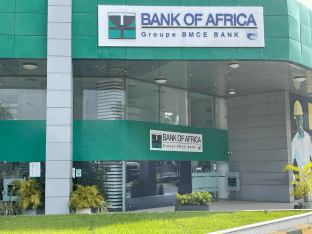Non-Performing Loans (NPLs) ratio has increased marginally from 15.0% in April 2020 to 15.5% in April 2021. According to the Bank of Ghana, this is partly a result of the general pandemic-induced repayment challenges as well as some bank-specific loan recovery challenges.
Despite the rise in NPLs, the banking sector maintained its resilient performance through to End-April 2021. Recent data from the Bank of Ghana shows a strong growth in total assets, deposits and investments. Total assets increased by 16.4% to GH¢155.7 billion. The Bank of Ghana attributed this to the strong growth in investments in government securities by 34.9% to GH¢73.3 billion.
Also, total deposits recorded an annual growth of 24.2%, rising to GH¢104.9 billion in April 2021. BOG explained that this was due to the strong liquidity flows from the fiscal stimulus and payments to contractors, depositors and clients of defunct SDIs and SEC-licensed fund managers.
Meanwhile, the Central Bank indicated that the Financial soundness indicators remained strong due to improved solvency, liquidity and profitability indicators. The industry’s Capital Adequacy Ratio currently stands at 21.8% at End-April 2021. This is well above the regulatory minimum threshold of 11.5%, according to BOG.
Other indicators
Core liquid assets to short-term liabilities declined to 24.9% in April 2021, relative to 30.1% in April 2020. Also, Net interest income rose to GH¢4.1 billion in April 2021. This is a growth of 18.4% compared to 18.8% growth recorded in the corresponding period last year.
Furthermore, Net fees and commissions grew stronger to GH¢917.6 million in April 2021. This is a growth of 26.5% relative to 8.8% growth during same period last year. Meanwhile, the BOG has attributed this growth to the gradual recovery in trade finance-related and other ancillary businesses of banks. Accordingly, operating income rose by 16.8%, marginally higher than the corresponding growth rate of 15.2% a year ago.
Moreover, the banking sector deployed effective cost control measures which resulted in a marginal 1.7% growth in operating costs over the review period. This is significantly lower than the 17.8% growth for the same period in 2020.
Bank profitability improved
Bank profitability has also improved significantly despite the devastating effects of the pandemic on households and businesses. According to the Bank of Ghana, profit before tax increased to GH¢2.3 billion. This represents a growth of 39.6% and also signifies a strong recovery from the marginal growth of 7.5% recorded a year ago.
Despite the sterling performance in some indicators, Loan loss provisions however increased by 29.4%, compared with 7.1% a year ago. The Bank of Ghana explained that this was as a result of continued elevated credit risks.
Furthermore, the Bank of Ghana has assured that the banking sector remains strong, resilient and well capitalized to aid a strong economic recovery. Non-Performing Loans Non-Performing Loans Non-Performing Loans
“Overall, the impact of the pandemic on the industry’s performance was moderate, as banks remained liquid, profitable and well-capitalized. The banking sector remains sound and profitable, with adequate levels of capital and liquidity to withstand moderate to severe shocks.
“The industry has witnessed sustained growth in deposits, total assets, profits, and shareholder funds. The COVID–19 policy and regulatory response measures have somewhat helped to mute the effect of the pandemic on corporates and households”.
READ ALSO: Court Orders Achimota School to Admit Rastafarian Students























